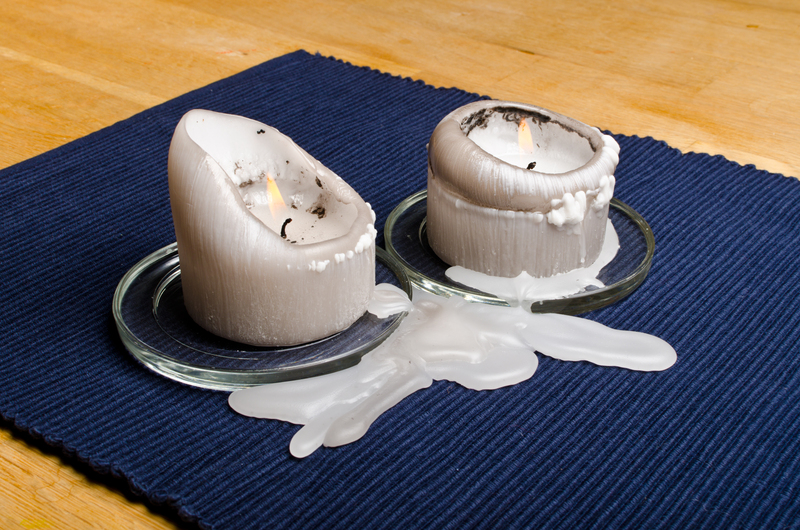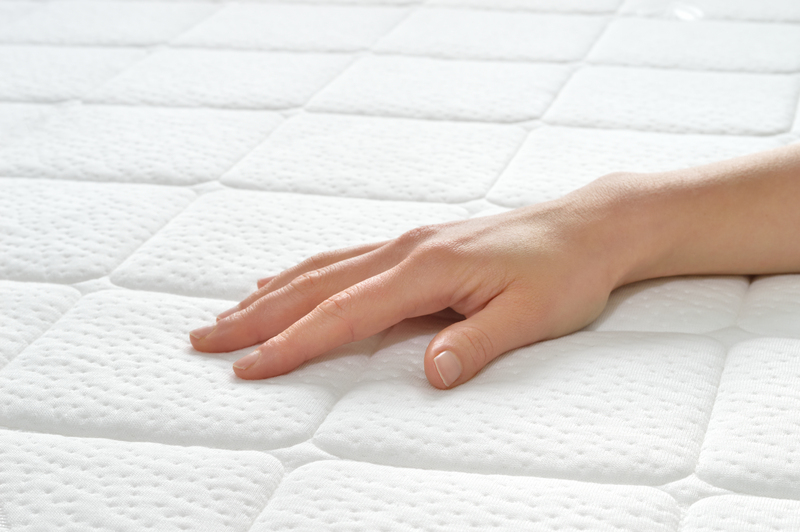Unlocking the Process: Tenant's End of Tenancy Cleaning Guide
Posted on 04/06/2025
Unlocking the Process: Tenant's End of Tenancy Cleaning Guide
When it's time to move out of a rented property, ensuring that you leave the space spotless is crucial. A comprehensive end of tenancy clean not only secures the return of your deposit but also leaves a positive impression on your landlord or letting agency. In this tenant's end of tenancy cleaning guide, we'll break down every detail you need to know, ensuring a stress-free handover and maximizing your chance of a smooth transition.
Understanding End of Tenancy Cleaning
End of tenancy cleaning refers to the deep cleaning of a rental property before a tenant vacates. This process is typically required by the tenancy agreement and failing to comply can lead to deductions from your deposit. This tenant move-out cleaning guide will empower you with the tools, tips, and best practices you need to ace the final inspection.
Why is End of Tenancy Cleaning Important?
- Deposit Refund: A thorough clean helps secure the return of your deposit.
- Avoid Disputes: Cleaning minimizes disagreements between tenants and landlords.
- Professional Impression: It demonstrates responsibility and respect for the property.
- Required by Law: Many tenancy agreements legally require move-out cleaning.

Getting Started: The Tenant's Checklist
Preparation is key for a successful clean. Before you start scrubbing, arm yourself with a comprehensive tenant end of lease cleaning checklist:
Essential Supplies
- Multi-purpose cleaner
- Anti-bacterial spray
- Glass cleaner
- Baking soda and vinegar (for natural cleaning)
- Microfiber cloths and sponges
- Vacuum cleaner
- Mop and bucket
- Rubber gloves
- Kettle or steam cleaner (for stubborn grime)
- Trash bags
TIP: Always consult your tenancy agreement for specific cleaning criteria. Some landlords and agencies may have additional or unique requirements.
Step-by-Step Guide: How to Clean Every Room
1. Kitchen Deep Clean
The kitchen is often scrutinized during the final inspection, so pay extra attention here. Follow these steps for a flawless result:
- Empty and Clean All Cupboards: Wipe down inside and outside. Remove crumbs, stains, and grease.
- Appliances: Clean oven, hob, microwave, fridge, freezer, and dishwasher. Defrost and sanitize the fridge/freezer. Don't forget behind and underneath!
- Sinks and Taps: Remove limescale, clean drains, and polish metal surfaces.
- Countertops and Tiles: Degrease and wipe clean, paying close attention to grouting.
- Floors: Sweep, mop, and ensure no stains remain.
- Bins: Empty, clean, and disinfect inside and outside.
2. Bathroom & Toilet Sanitization
Bathrooms should sparkle and look hygienic. Focus on these areas:
- Toilet: Scrub bowl, seat, and outer surfaces with disinfectant.
- Sink and Shower/Bath: Remove limescale, hair, and soap scum from taps, drains, and tiles.
- Mirrors and Glass: Streak-free clean on all glass surfaces.
- Floors and Tiles: Mop and polish, especially grouted areas.
- Extractors and Vents: Dust and wipe down to ensure proper airflow.
3. Living Room & Common Area Touch-up
Common areas set the first impression during inspection. Make sure every corner is attended to:
- Dust & Polish: Skirting boards, windowsills, and shelves.
- Upholstery: Vacuum and spot clean sofas, chairs, and cushions.
- Carpets and Rugs: Vacuum thoroughly and shampoo if excessively stained.
- Windows: Clean inside and out if accessible.
- Light Fixtures & Switches: Dust and remove any visible marks or cobwebs.
4. Bedroom Detailing
Bedrooms should present a calm and clean space. Focus on:
- Wardrobes and Drawers: Empty and wipe inside and out.
- Mattresses: Vacuum both sides and air out if possible.
- Mirrors: Clean for a streak-free finish.
- Floors: Vacuum or mop as appropriate.
- Windows: Ensure no smudges or dust remain.
5. Hallways & Entrances
The first and last area landlords will see - don't neglect it!
- Floors: Sweep and mop thoroughly, especially if muddy footprints are common.
- Doors and Handles: Clean and disinfect, removing any marks or sticky patches.
- Lighting: Dust fixtures and replace dead bulbs.
Pro Tips for a Professional Finish
- Work Top to Bottom: Always clean higher surfaces first; dirt dislodged will fall onto lower areas, which you clean last.
- Check for Forgotten Spots: Remember door frames, behind radiators, curtain rails, and air vents.
- Patch Repairs: Fill small holes, scuffs, and clean marks from walls if needed (with approval).
- Leave the Empty Bins: Ensure all refuse and recycling bins are emptied and cleaned.
Document Your Cleaning: Before and after photos provide proof of your efforts in case of disputes.
Should You Hire a Professional End of Tenancy Cleaning Service?
While a DIY approach saves money, professional move-out cleaning companies offer a deep, guaranteed clean which can be essential if your letting agency or landlord is especially particular. Evaluate your budget, the terms of your tenancy, and your own available time.
- Advantages: Professionals know the inspection process and cover every detail.
- Drawbacks: Extra cost, but you can often split with housemates.
- Certificates: Many agencies require proof of professional cleaning for certain elements (e.g., carpets or upholstery).
Common Tenant Cleaning Mistakes & How to Avoid Them
Even with good intentions, tenants sometimes overlook crucial cleaning tasks. Avoid these common pitfalls to prevent deposit deductions:
- Overlooking Appliances: Ensure the oven, microwave, and fridge are immaculate.
- Neglecting Flooring: Stains and residue leave a bad impression - deep clean all floors.
- Skipping Behind/Under Furniture: Hidden dust and dirt often attract deductions.
- Missing Windows and Curtains: Clean windows from both sides, wash curtains or at least vacuum and deodorize.
- Unemptied Bins: All bins, including those in bathrooms and bedrooms, should be clean and fresh.
Final Inspection: Be Ready
Schedule your cleaning a day or two before your inspection. This gives areas time to air out and ensures your efforts stay visible. Double-check the inventory report and original condition photos. Being present during the inspection allows you to address concerns immediately.
Sustainable and Eco-Friendly Cleaning Approaches
Modern tenants often seek eco-friendly alternatives. Consider these sustainable end of lease cleaning tips:
- Use Natural Products: Vinegar, lemon juice, and baking soda clean effectively and are less harsh than chemicals.
- Reusable Cloths: Microfiber cloths replace paper towels and are more effective at trapping dirt.
- Low-Energy Cleaning Devices: Steam cleaners sanitize using only water.
- Proper Disposal: Separate recycling from landfill waste and dispose of hazardous materials properly.
FAQ: Tenant's End of Tenancy Cleaning
Do I need to hire a professional cleaning service?
No, unless required by your contract. If you clean to professional standards, DIY is perfectly acceptable. However, for carpets and upholstery, some agencies insist on a certified service -- always check your tenancy agreement.
How clean is 'clean enough'?
The golden rule is to return the property to the state it was at the start of your tenancy, minus fair wear and tear. Refer to your inventory or check-in report for exact details.
What if something is damaged or stained?
Minor wear is expected, but excessive staining or damage should be addressed. You might be charged for repairs or extra cleaning, so report any issues upfront and, if possible, resolve them yourself cost-effectively.
How long does end of tenancy cleaning take?
Depending on property size and current condition, plan for a full day's work. Larger homes or particularly dirty spaces could take longer, especially if tackling the job alone.
End of Tenancy Cleaning for Shared Houses
If you're living with housemates, collaborate! A group clean is faster, fairer, and more likely to hit every required touchpoint. Communicate expectations early and assign responsibilities.
- Divide the rooms and tasks evenly.
- Agree on supplies and splitting costs for professional services if needed.
- Check shared spaces together during a walk-through.
- Take collective photos as proof of your group's effort.
Move-Out Cleaning: Beyond the Basics
For those seeking an ultra-impressive clean (or trying to outdo the inventory clerk!), consider these additional tips:
- Polish Metal Fixtures: Door handles, taps, and light switches sparkle with a final polish.
- Clean Air Vents and Extractors: Remove dust and check for blockages.
- Sanitize Remotes and Controls: Especially important in furnished lets.
- Deodorize: Neutralize any lingering odors with air fresheners or bowls of baking soda.
- Gardens/Balconies: Sweep up debris, haul away weeds, and ensure outdoor spaces are tidy.

Key Takeaways: Unlocking the Process
- Start Early: Preparation gives you time to tackle tough jobs or arrange professionals.
- Follow a Checklist: Systematic cleaning prevents missed spots.
- Document Everything: Take photos to support your deposit claim.
- Be Present at Inspection: Address final concerns immediately.
- Communicate Proactively: Let landlords know about any issues or repairs, and demonstrate your cleaning efforts.
Conclusion: Your Trusted Tenant's Move-Out Cleaning Companion
Leaving on the best terms with landlords and maximising your deposit return is easily achievable with the right strategy. Whether you choose DIY or professional, the steps outlined in this comprehensive Tenant's End of Tenancy Cleaning Guide will help you unlock a smooth, stress-free move-out. Tidy up, stay thorough, and walk away with peace of mind and your full deposit in hand!
Remember to bookmark and share this guide for accessible, actionable advice and make your rental exit the best it can be.



